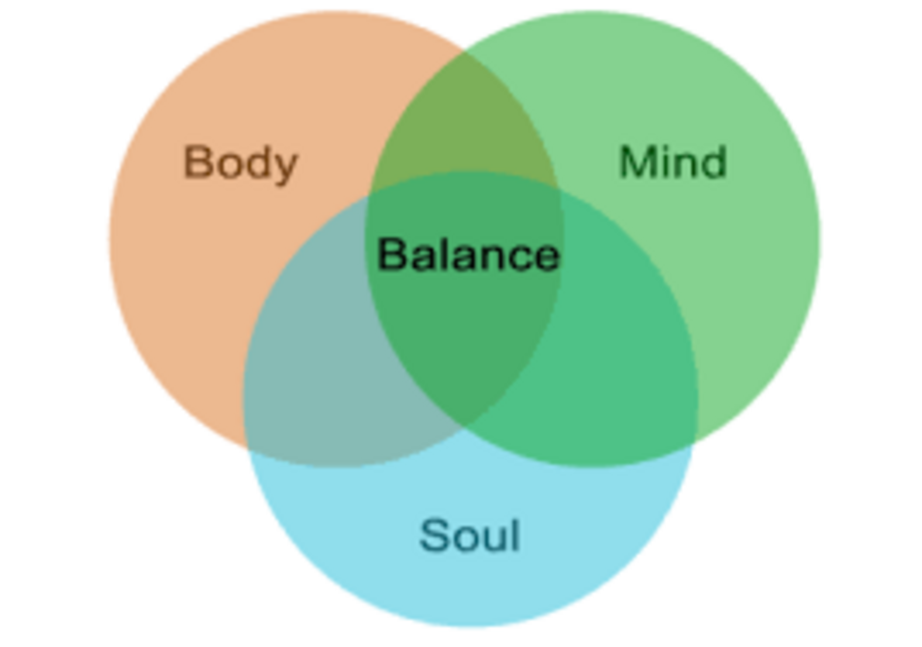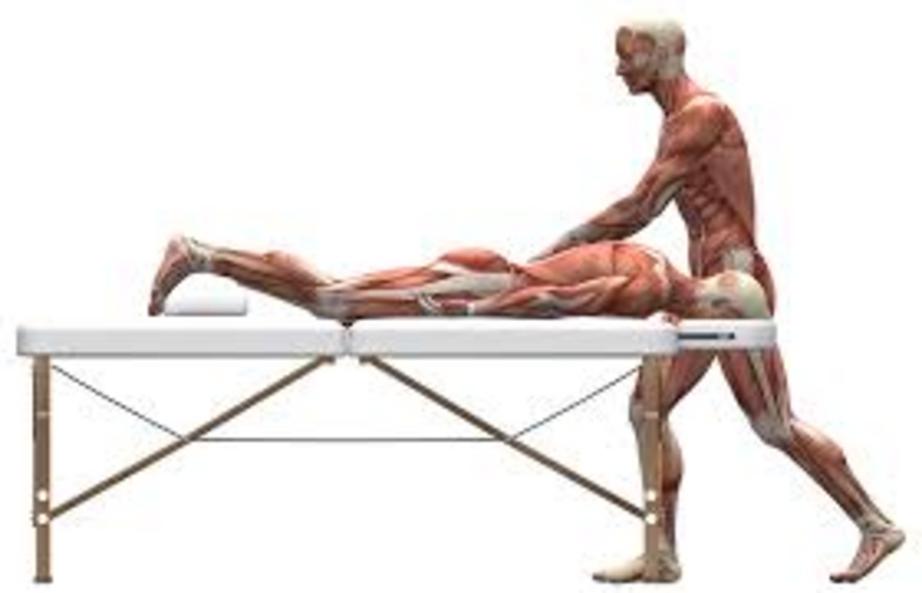Body psychotherapy : a short guide to the art and science of bodylistening
Mind and body are interlinked. If that seems obvious, it’s surprising that so many of us routinely separate the two, particularly when life’s problems arise or when there is the urge to grow and develop. I take my body to the gym, the doctor, the masseur, and my mind to the psychoanalyst, the counsellor.
Body psychotherapy describes a range of therapeutic approaches which aim to treat the mind and body (and arguably the spirit) together. There isn’t a strict definition, and there are overlapping terms including body-centred or body-oriented psychotherapy, deep bodywork, embodied relational therapy, and somatic psychology. I like to call it Bodylistening. This is an introduction to the subject, with some history, concepts, sources, and contacts.
Body psychotherapy suggests that who we are is a result of all our experiences, especially the early years when we were growing and developing as human beings. As we grow, these experiences affect the way the physical and mental pathways in our nerves and tissues are laid down. As we gain a sense of who we are, our interactions with others give us beliefs and reactions that are literally held in the body. As we become adult this ‘holding’ may cause physical and emotional problems – and may also give clues to our potential for growth and creativity.
A bit of history

The major influence on body psychotherapy is Wilhelm Reich, a colleague of the psychoanalyst Sigmund Freud. In the 1920s Reich expanded Freud’s ideas about the effects of childhood development on the mind. He was interested in the way early shocks to the growing system might affect the free flow of body energy, producing energetic blocks, which he called ‘character armouring’. Whilst Freud believed that difficulties caused by early childhood experiences could be cured through talking, Reich showed that they could be addressed by working directly with the body. Different stages of development were likely to affect the growing body-mind in different ways, for instance difficulties around birth, early feeding problems, overwhelming parental control or shameful early feelings of sexuality, would create different ‘character structures’. Reich would work with these using breath techniques, massage, exercises and body postures.
In the wake of Reich, a second wave of therapists expanded his thinking into a number of body-centred approaches, including Bioenergetics (Alexander Lowen), Core Energetics (John Pierrakos), Somatic Emotional Therapy (Stanley Keleman), Biodynamic Psychology (Gerda Boyesen), Rolfing (Ida Rolf) Postural Intergration (Jack Painter) and Biosynthesis (David Boadella). Other body-centred approaches appeared, influenced by Gestalt (Ron Kurtz’s Hakomi); Jungian psychology (Arnold Mindell’s Process Oriented Psychology); body awareness (Eugene Gendlin’s Focussing); and Buddhist mindfulness practice (Jon Kabat-Zinn).
The 1970s saw an explosion of interest in body-centred work, alongside other alternative and complementary therapies. Therapists were working with individual clients and groups using a range of bioenergetic and neo-Reichian techniques. It enjoyed a mixed reputation; many traditional psychotherapists were concerned about the possibility of blurred boundaries and client abuse, particularly where there was a focus on cathartic releasing of pent-up emotions, exploration of body energy and sexuality, and potentially invasive hands-on work.
Many bodyworkers saw this distrust as evidence of conventional society’s urge to repress the body (alongside the unconscious and the feminine – sources of emotion, unpredictability and embarrassment). They point also to the objectification of the body; as a society we see the body as an object which needs to be fixed and kept beautiful, rather than something we inhabit and which tells its own story. Most body therapists question the medical model of therapy (where the therapist aims to ‘cure’ the client), in favour of a humanistic vision of joint exploration and investigation of the body-mind.
More recently, body-centred work has become more ‘respectable’, for a number of reasons. Training programmes (eg in the UK those run at the Open Centre, Chiron Centre, Cambridge Body Psychotherapy Centre) began to focus more on client-therapist probity. Some of the emphasis on cathartic release and physical restructuring has been balanced by a more integrated approach which values fine energy work, subtle movement and body awareness. A resurgence of interest in psychoanalytic theory (eg the British Object Relations school, and research by Margaret Mahler and Daniel Stern) found new evidence for the pivotal impact of early experience in creating a healthy bodymind. This was reinforced by work in neuroscience (eg Antonio Damasio and Allan Schore) which showed how the body plays a crucial role in our emotional wellbeing. In particular, the idea that some traumatic experiences cause an emotional freezing which can best be unlocked through body-centred work has gained widespread acceptance and is now used routinely for work with post-traumatic stress.
Different approaches, same attitude
 pixabay.com
pixabay.com
What links the very wide range of body-centred therapies? I’d say it involves an attitude of listening to the body, and taking its messages seriously – what I call Bodylistening. The writer and therapist Nick Totton suggests there are three main approaches to body psychotherapy. He calls these the adjustment model, the trauma/shock model and the process model. Adjustment deals directly, physically, with the body and can include hands-on work to release what is often described as ‘stuck energy’ held in the body. This can involve potentially painful deep tissue work (eg Rolfing, Postural Integration), more gentle massage work (eg Biodynamic massage), and body re-education (eg Feldenkrais). The trauma/discharge model assumes that the body holds echoes of early shocks (which can include low-level, chronic neglect or over-control, as well as traumatic incidents or sustained abuse), and that these can be released by paying attention to unexpressed reflexes and allowing the completion of held-back impulses. A number of techniques and protocols for dealing with body-held trauma have been developed (Peter Levine, Babette Rothschild, Ogden & Minton). The process model takes an interest in what the body and its symptoms represent as a story or metaphor, and working with the ideas, gestures, images, movements which arise. This can help to contact aspects of our selves which have been held back, out of awareness, and which need to be allowed expression. This approach is influenced by Jung, and includes work with movement, and gestalt and existential psychology.
How does it work in practice?
I have a bodywork practice in Brighton. I tend to use a mix of all three approaches, depending on the client, and what emerges in a session. To start with, I might ask a client simply to notice what appears in their awareness, in the moment. Say for example s/he notices a tension in the chest. The adjustment approach might work directly with massage to release the tension, or experiment with consciously increasing the tension, whilst looking out for any feelings, memories or images that appear. The trauma/discharge approach could ask the client to begin paying attention to the sensation in the chest and track any changes, having first agreed a safety protocol to help deal with any overwhelming feelings which might arise. The process model might invite the tension to speak, or move, or tell its story. We might investigate together how this tension serves the client, and how the rest of the body-mind relates to it.
In choosing the particular approach we will often ask the body directly what it favours, and trust its response. This can take a bit of getting used to, but in my experience the body responds to being listened to, and will reveal more as it discovers a new channel of communication. There is no ‘correct’ line of investigation – the session is an experimental space where discoveries are made. It’s fascinating work! Body-centred approaches also work well with groups – which is why I also run workshops and courses using movement and dance.
Problem or potential?
As I hinted above, our body carries a record of our developmental history and is an important mirror of our individual characters. Early shocks might give us a tendency to withdraw, or experience inexplicable fears; we might have learned to squash our natural exuberance, or been encouraged to grow up too quickly.
As developing babies and children, we learn to adapt quickly in order to grow and survive. In adult life these adaptations may become stuck patterns of response which no longer serve us. They can manifest in the usual range of psychological ‘problems’ – anxiety, depression, relationship difficulties, self esteem, etc – which a traditional psychotherapist or counsellor might address. But by listening to the body we aim to trace the story back to its roots and invite change on a fundamental, physical level. Where, and why, did I first develop these patterns which once helped me to survive, but now limit me?
Body psychotherapy is particularly effective in addressing these early developmental imprints – often from a time before the client can remember, and even before a sense of self has fully developed. Although clients may bring particular life issues to the session, there is often a feeling of stuck energy, unfulfilled potential, or general unease, which seems to underlie the presenting problem. Bodywork can really help to identify and work with these deeper problems which may initially feel vague, or difficult to specify.
What are the results?
The concerns which people bring to therapy usually turn out to hold the key to unlocking new energy. Our unique embodied characters all have strengths and weaknesses. They hold important clues – about where I am holding back in my life, and where there is potential for new movement and growth. The body-centred therapeutic process involves creative exploration and experimentation. It is even possible to enjoy therapy! A focus on the body can often bypass the familiar mental structures, tapping into a deep source of information and wisdom that is ready to help the client heal, to become part of a bigger whole.
There’s good scientific evidence (eg LeDoux) that in the therapy space a combination of focussed body attention and emotional support can create a state of ‘neural plasticity’, allowing the brain to make new connections and establish more helpful patterns of reaction and response. A skilled body psychotherapist will help to create the conditions for this to happen. The results can be surprising – new insights and understanding, new energy, and a deeper sense of ease with myself.
Choosing a body psychotherapist
Body psychotherapy treats mind and body as one interlinked system. I’d argue that it is a discipline distinct from conventional psychotherapy, with its own history, models and practices. Some practitioners are traditionally trained psychotherapists who have brought body wisdom into their work. Others may be bodyworkers who have developed skills to deal with the psychological and emotional releases which hands-on work can evoke. Some will be formally trained and accredited through counselling and psychotherapy organisations (BACP, UKCP), others will have studied with teachers and trainers who do not offer mainstream accreditation. Not all practitioners in the field call themselves psychotherapists – perhaps the best guide is to look at their training, their affiliations (if any), length of experience, and what they say about themselves. And trust your body’s reaction.
The government is currently considering formal state regulation of psychotherapy and counselling. There is widespread concern that this could introduce inappropriate standards and regulatory practice based on the medical model (‘curing patients’). Therapists who value a more humanistic approach – and particularly body psychotherapists – are likely to look for alternative ways to demonstrate their competence and probity, through what is becoming known as Alternative Practitioner Accountability (APA). For instance, I am a member of the Independent Practitioners Network (IPN), a peer network of linked groups which support practitioner accountability and best practice.
For the rest of this article please go to source link below.

